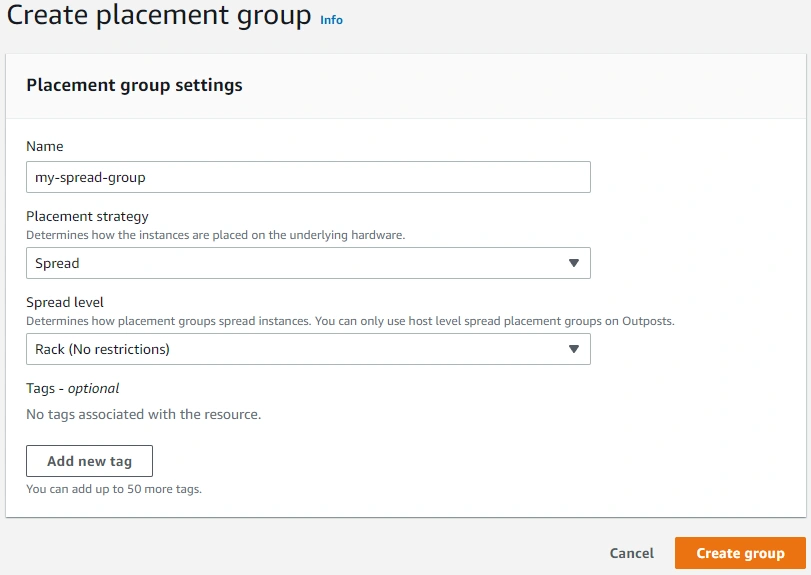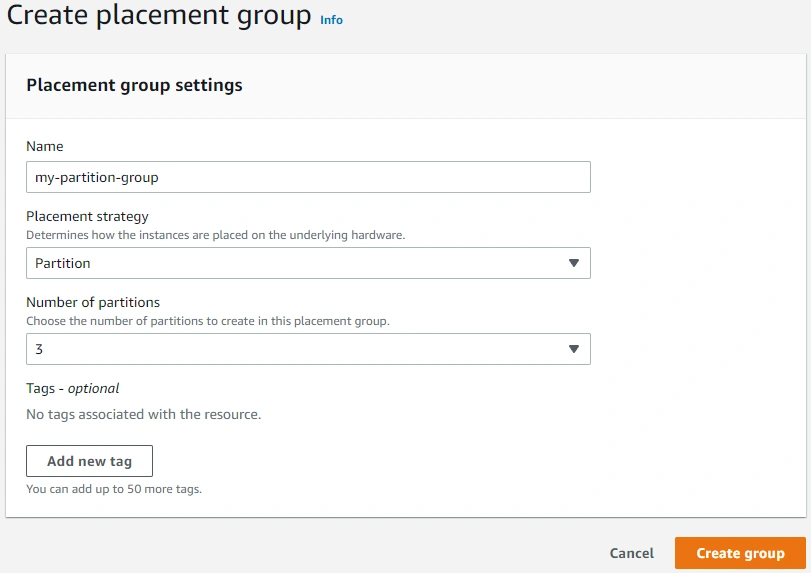EC2 Placement Groups
- Authors
- Name
- Michael Bui
Overview
Placement groups allow you to place your group of instances in a specific way. You can have them spread across availability zones & hardware for resiliency or on the same rack for low latency tasks.
In this lab, we'll create a cluster, spread, and partition placement group. We'll also look at how to place EC2 isntances into these groups.
Creating Placement Groups
Cluster
- EC2 instances are placed in the same rack in the same availability zone
- Lower latency
- If a rack fails all our EC2 instances fail
- Go to
EC2->Placement Groups - Provide a name & select
Clusteras the placement strategy
Spread
- All EC2 instances are placed on different hardware (racks)
- Span across multiple availability zones
- Less risk of simultaneous failure
- Limited to 7 instances per AZ per placement group
- Go to
EC2->Placement Groups - Provide a name & select
Spreadas the placement strategy
Partition
- A partition is a specific rack in that AZ
- 7 partitions per AZ
- Go to
EC2->Placement Groups - Provide a name & select
Partitionas the placement strategy - Choose the number of partitions (racks) you want to have

EC2 Instances in Placement Groups
- When creating an EC2 instance you can specify which placement group to place it under
advanced details
- View the details of the placement group when you click on the EC2 instance
